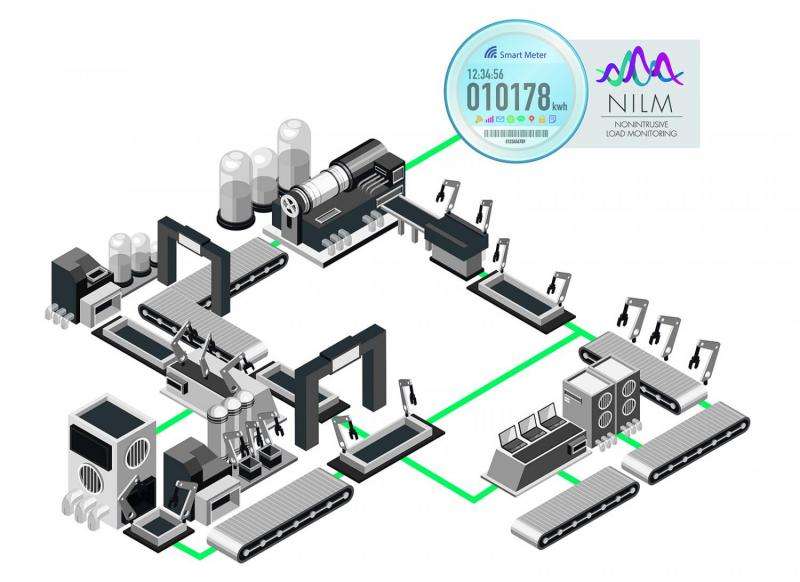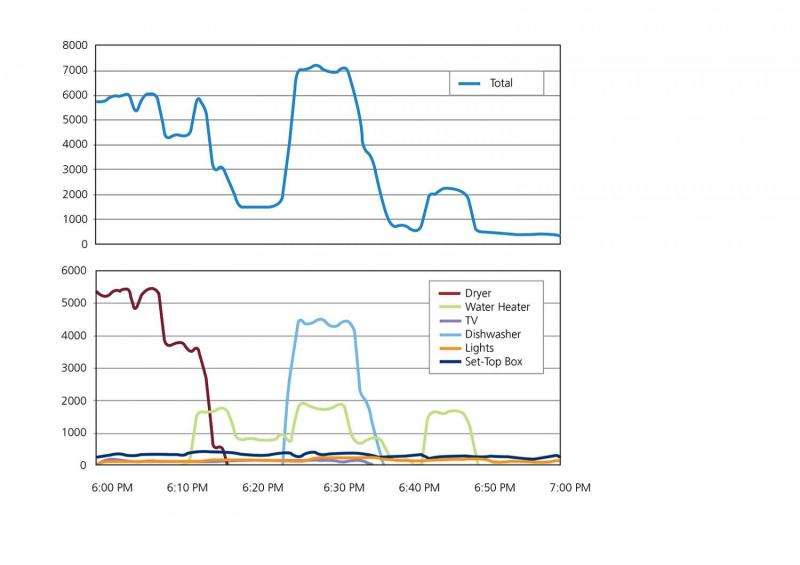Smart meters to use algorithms to analyze electricity consumption

Using innovative electric meters and smart algorithms, Fraunhofer researchers want to revolutionize energy management in the future. In cooperation with their partners, they have developed a method that breaks down total energy consumption appliance by appliance using a single, high-tech electric meter. A prototype will be exhibited at BAU 2017, and is set to go on sale next summer.
The cost of electricity is rising. Saving energy ceased to be a fad long ago, and is now a sheer necessity. Yet up until now, consumers could do little more than switch appliances off or leave them on standby. But thanks to NILM (non-intrusive load monitoring) technology, which was developed by the Fraunhofer Institute for Microelectronic Circuits and Systems IMS in Duisburg, things might change radically very soon. The NILM project involves IMS as the lead organization and other partners from industry, and received the go-ahead in October 2015. It is projected to last two years.
"Fingerprints" all over the power grid
The technology is based on a simple principle: each device has a pattern of energy consumption that gives rise to a type of signature or "fingerprint" within the power grid. Using algorithms, it is possible to identify this signature within total energy consumption, and so determine energy consumption rates for individual appliances. Only one meter capable of taking three-phase current and voltage measurements is needed to do so. This eliminates the laborious installation and maintenance of multiple meters – also known as sub-metering.
Avoiding power grid peak load times
A software program visualizes the power consumption of each device in real time. Users can determine when the coffee maker switches itself on, the washing machine is spinning, or a light has been switched off. Users can also identify when an appliance is faulty because faults also give rise to altered consumption signatures. If a refrigerator develops a faulty seal, for instance, increased energy use will draw attention to it.

In industry, trade and commerce and the service sector, NILM technology could result in energy savings of more than 12 percent. Companies can analyze their power consumption during production and determine what components in a product use high levels of energy during manufacture. Peak load times in the power grid can also be recorded and therefore avoided.
Complementing industry 4.0
NILM represents an ideal complement to industry 4.0. By measuring the power consumption of specific devices, a company can optimize its energy management. Dr. Gerd vom Bögel, head of the business unit at IMS, and his team are developing and optimizing the required algorithms to make this vision a reality. "A single electric meter can monitor over twenty devices. Conventional meters, in contrast, only show total energy consumption by all connected devices, for instance that a light, fridge, and toaster combined have used a total of 500 watts," explains vom Bögel.
To supply the algorithms with sufficient data, the high-tech SmartMeter measures energy intake at a scanning frequency of up to 1 megasample-per-second. Among other things, the meter records interference voltage, that is, the noise produced by devices in the power grid. Which devices are in use can be determined based on the various frequencies of the interference voltage.
EasyMeter GmbH is the partner responsible for developing NILM meter hardware while Discovergy GmbH is developing the necessary gateway and processing server. Still another project partner, GreenPocket GmbH, is responsible for the user interface, and evaluates and visualizes data. Finally, RWE GBS GmbH secures suitable test clients from the commercial and industrial sectors, and analyzes data with a view to developing measures to ensure more efficient energy use. The German Federal Ministry for Economic Affairs and Energy (BMWi) is providing the funding for this joint project.
Fraunhofer researchers continue to work on the system's recognition accuracy and the ideal combination of measured parameters and algorithms. The technology is expected to be ready for the market in summer 2017. "While industrial and commercial applications are our focus, home users are another suitable group," says vom Bögel.
A NILM prototype will be on display in at BAU 2017 from 16-21 January (Hall C2, Booth 538). At the trade fair, IMS will demonstrate how the energy intake of appliances such as refrigerators, coffee machines, lights, or TVs can be measured by SmartMeter and visualized on screen.
Provided by Fraunhofer-Gesellschaft



















